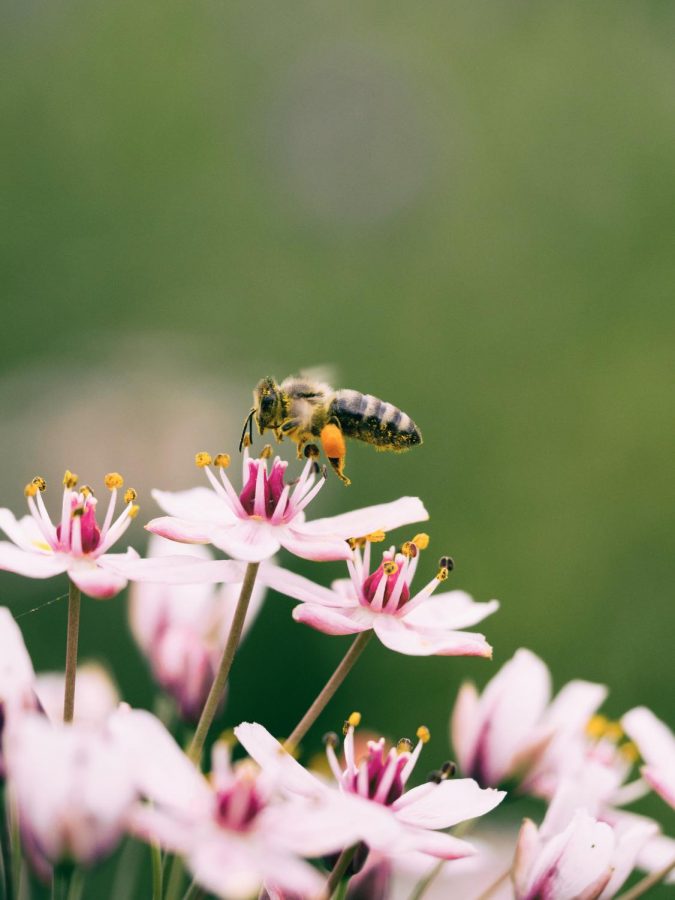Future of Humanity Under Threat
Photo by Aaron Burden on Unsplash
A bee pollinating flowers.
November 15, 2019
Many events have risen to become a threat to the future of humanity. Not just global warming or volcanic threats, but also the endangerment of animals around us. For example, according to Scientificamerican.com, populations of mammals, birds, fish, reptiles and amphibians have shrunk by 60 percent in just over 40 years. Between the years of 1947 and 2005, the number of honeybees in the United States has declined from 5.9 million to 2.4 million.
Bees have been disappearing at an alarming rate. If bees go extinct, it would affect our whole food chain. Samantha Dunn states, “I don’t know what people would do if the bees go extinct.” Scientists say that it would start with possibly losing the plants bees pollinate. Then, that could affect all the animals who eat them, and this impact could lead up the food chain to us humans. Hence, it could possibly become difficult to sustain a global population of over seven billion people.
Honeybees are vital for a healthy environment and economy. They help keep plants and animals alive. Without bees, we wouldn’t have as much to eat. Geneticliteracyproject.org states, “One-third of our global food supply is pollinated by bees.”
Some may be wondering, what is killing the bees? Colony Collapse Disorder is the most common answer. Britannica.com says, “CCD is the disorder that appears to affect the adult bees’ ability to navigate. They leave the hive to find pollen and never return.” CCD can be caused by chemical contamination, poisoning from pesticides and lack of genetic adversity. In the six years leading up to 2013, ten million colonies were lost.
Olivia Mlouk, a seventh-grader at McAuliffe Middle School, states, “Bees are very important for our environment, and we should do everything in our power to save them from extinction.”



Hayden Belshe • Nov 17, 2019 at 10:22 am
Most people are afraid of bees and don’t realize how much they actually matter in are environment. I hope people take into consideration that they help grow the plants and produce food which we need to survive. The information in this article was well written and made me think twice about how much bees help the environment.
Jasmine Lee • Nov 16, 2019 at 3:17 pm
Great job Payton! This story is so good and well written!
kenzie • Nov 15, 2019 at 2:11 pm
it is so horrific that bees are almost extenct beacue of us and they need to care more about bees beause they keep ower food polinated and they make flowers grow out of the ground and my mom is alergic to bees and she dosnt mins them she just satys clm. i also saw a vido of this guy geting stun by a bee and he told evry one to just leet the bee work its self out of your skin ad not to shake it.
Zoey • Nov 15, 2019 at 2:04 pm
Honey bees are a very important factor in our lives. I wish that some people would care more about bees.
Joy • Nov 15, 2019 at 11:00 am
It’s terrible how bees are almost extinct, I really liked the information you included in your article.
Ryan Min • Nov 15, 2019 at 10:45 am
I wish people would actually acknowledge the fact that the bees need help. I hope that the bees will manage so pull through or even evolve to be resistant to toxic chemicals.